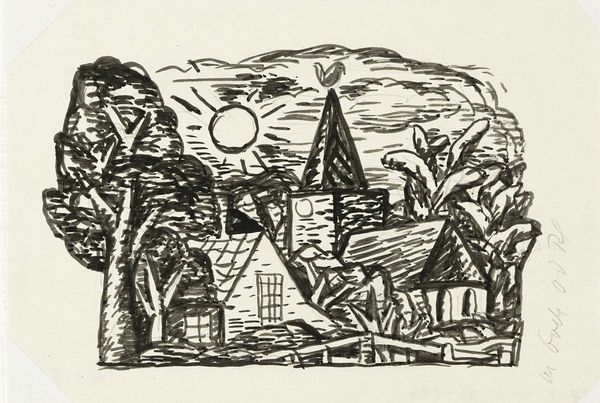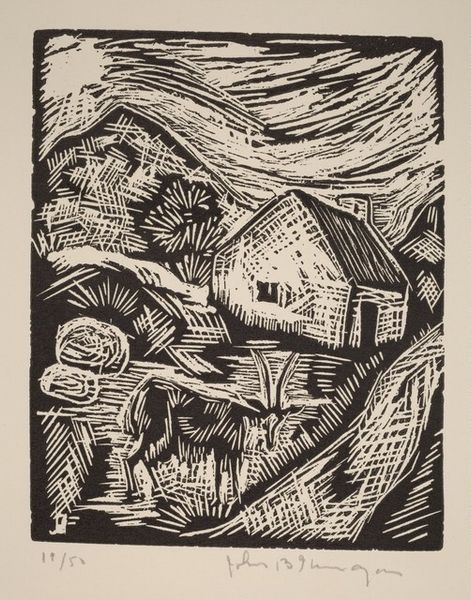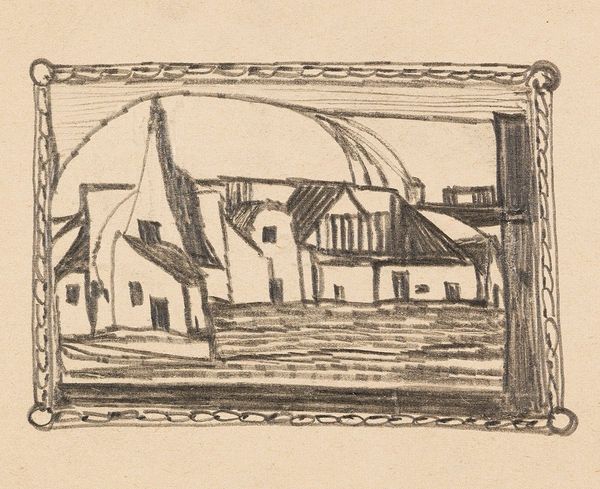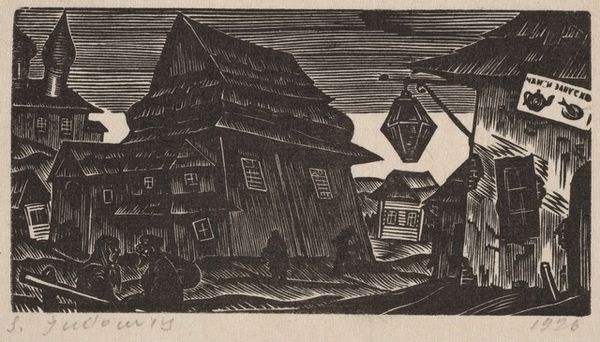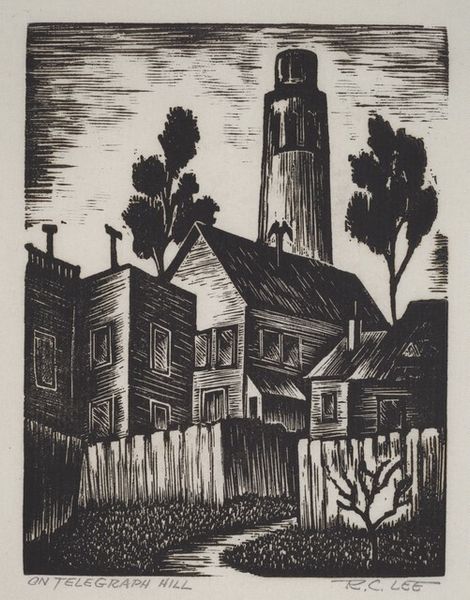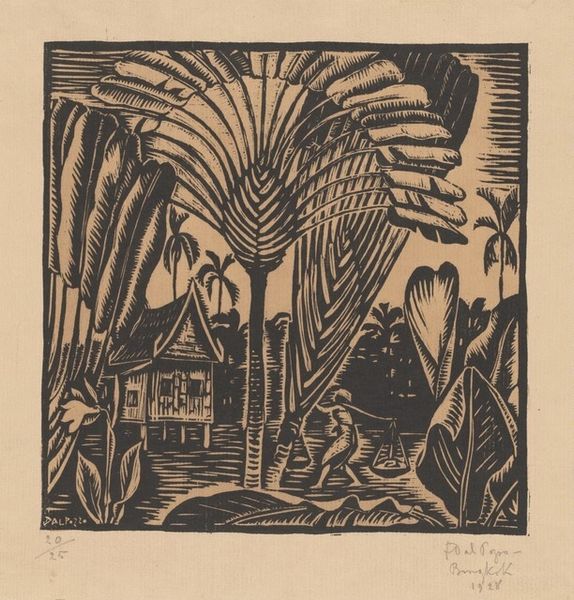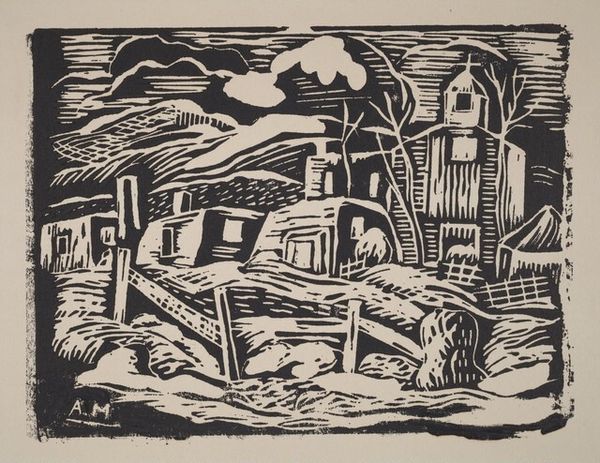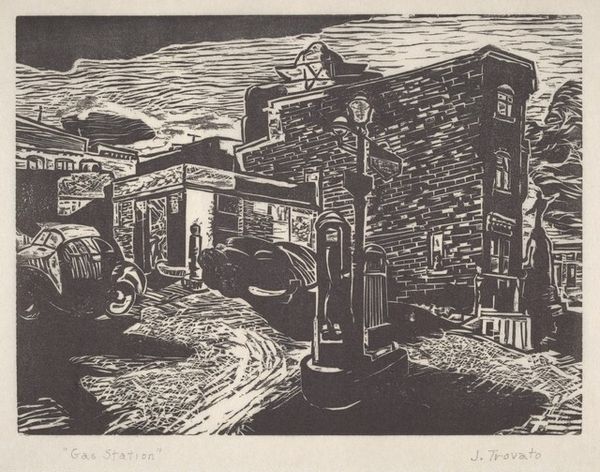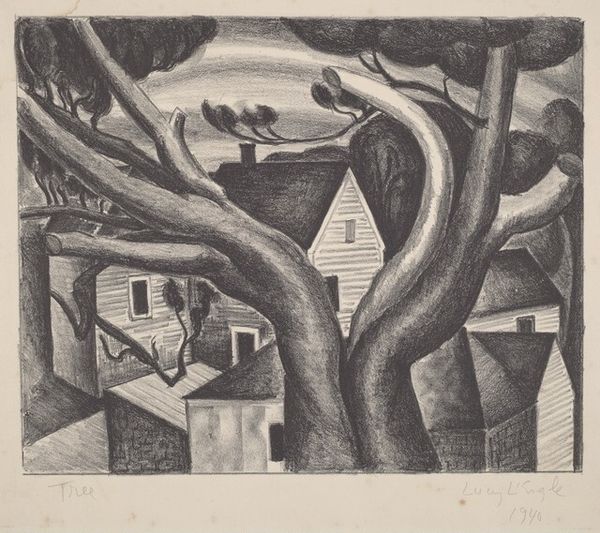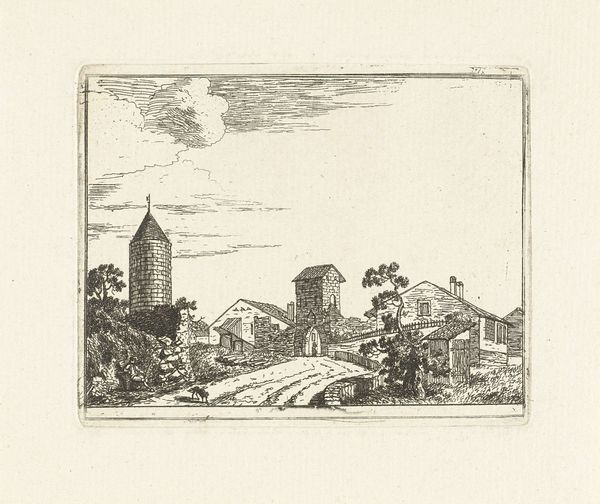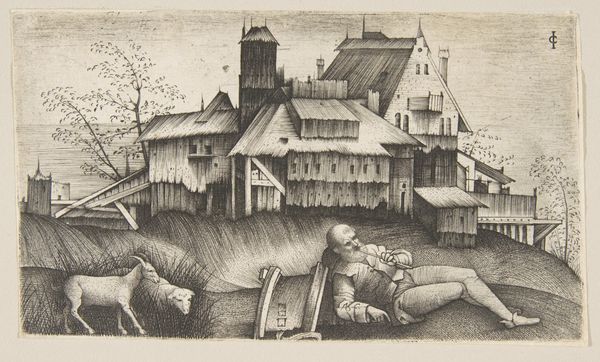
Vignet voor biografie van Gestel door Prof. W. van der Pluym 1935 - 1936
0:00
0:00
leogestel
Rijksmuseum
drawing, print, ink, woodcut
#
drawing
#
pen drawing
# print
#
pen illustration
#
pen sketch
#
landscape
#
ink line art
#
ink
#
woodcut
#
modernism
Dimensions: height 107 mm, width 162 mm
Copyright: Rijks Museum: Open Domain
Curator: So, here we have a vignette, entitled "Vignet voor biografie van Gestel door Prof. W. van der Pluym". It’s believed to have been made by Leo Gestel sometime between 1935 and 1936. Editor: Oh, wow. The crisp, stark blacks and whites – it's like stepping into a woodcut fairytale. A rather dark one, perhaps? The lines are so bold, they give off this strangely gothic, yet undeniably folksy vibe. Curator: Precisely! It’s crafted from ink, likely both a pen drawing and a woodcut print. I see a world laden with familiar, almost archetypal imagery: the church with its rooster weathervane, the humble houses, and the radiant sun looming above it all. Notice the strong contrast in tones; very characteristic of the Modernist period. Editor: The sun *does* loom, doesn’t it? There's something almost oppressive about its blank face shining down on that little village. Is it judgement, hope, or simply…indifference? The church feels very central, in all senses of the word. Almost like it wants to cut up the composition in an odd number, maybe three sections. Curator: Churches often take center stage in art, operating both as symbols of faith and communal identity. However, in light of Modernism’s emphasis on secularism and a general re-evaluation of societal norms, you wonder whether the artist used the church in a more ironic sense? Think about what a rooster weather vane traditionally signifies. Is this symbol lost? Is there any continuity here? Editor: Right, it makes you think, doesn't it? And that rickety fence in the front... I almost tripped just looking at it! Yet there is this naive feel to it all. Like a dark child's vision. Maybe, the artist is reminding us about a specific aspect in van Gestel’s life or persona, that we, now, no longer understand. Curator: It certainly prompts introspection, doesn't it? Examining it closely allows us to unpack these familiar imageries. In the end, it transcends mere representation to speak volumes about the human condition. Editor: It truly does! So much lurking beneath those seemingly simple lines and forms. This vignette certainly doesn't feel like a little decoration anymore, more like an intriguing symbol to decipher.
Comments
No comments
Be the first to comment and join the conversation on the ultimate creative platform.
